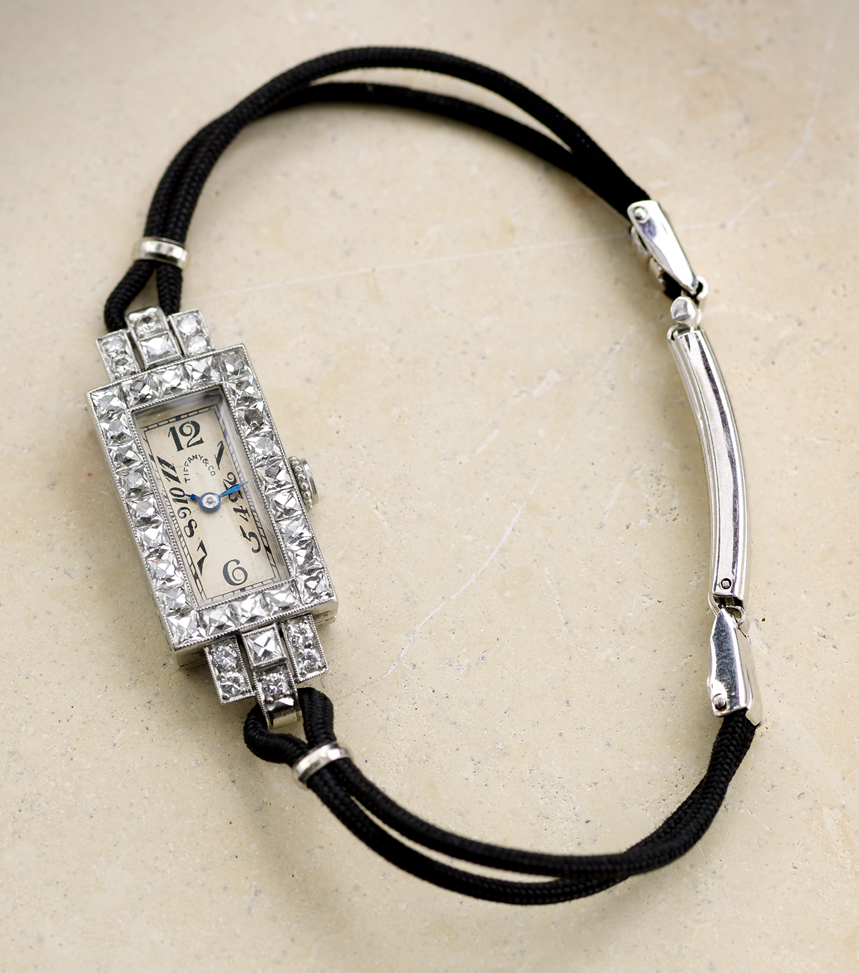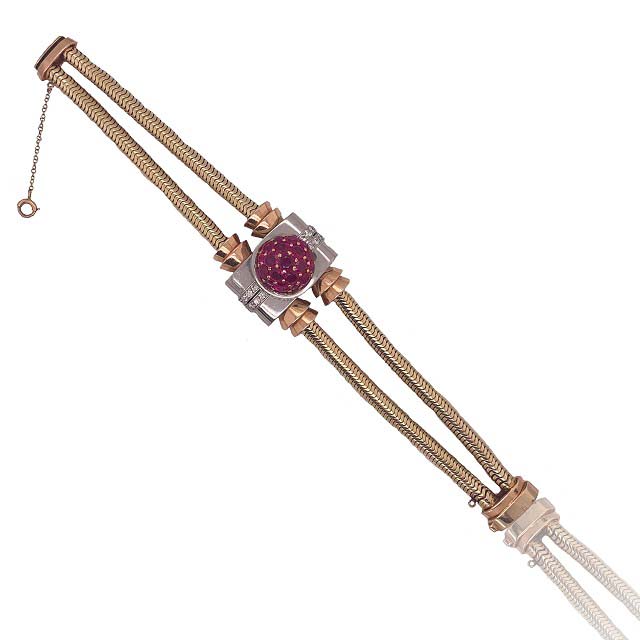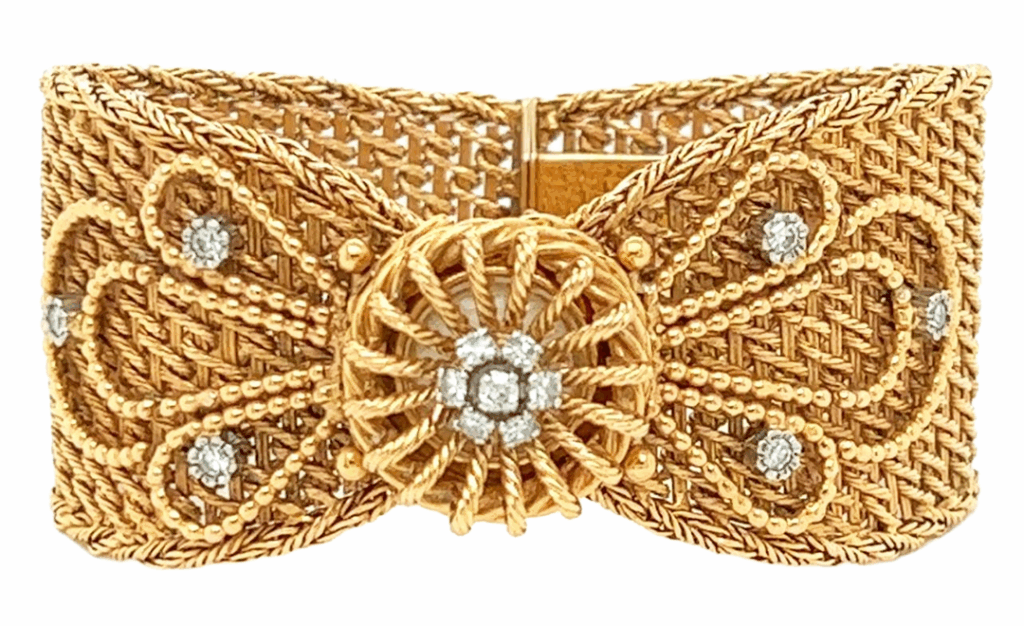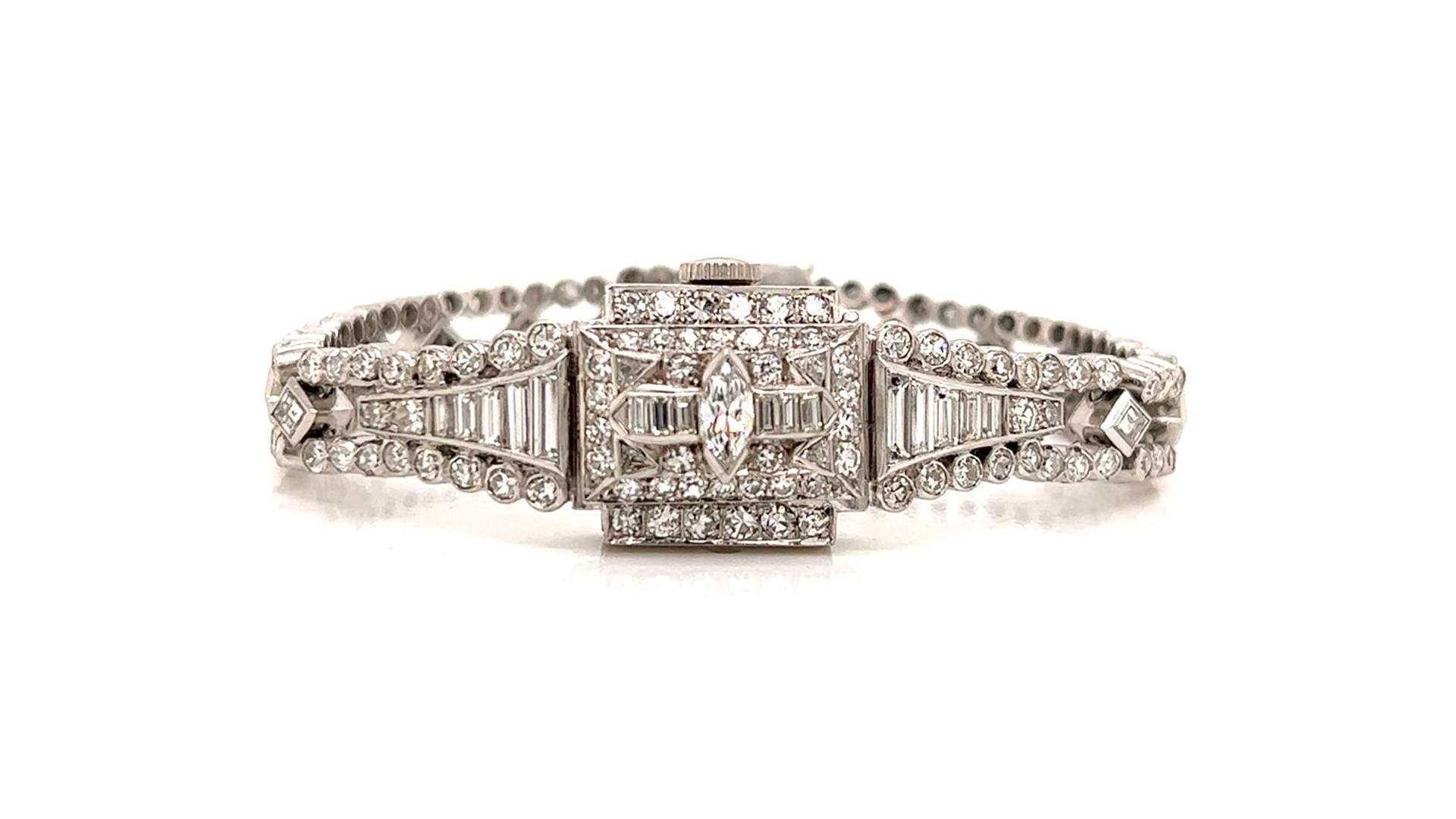It’s cocktail hour somewhere in the world right now and in the early decades of the twentieth century It was those colorful drinks that inspired people to dress up and party with these new libations at the center of the celebrations. Of course the right clothes and accessories were an important part of cocktail culture which gave rise to the cocktail party and glamorous jewelry, including the cocktail watch. A cocktail watch, sometimes called an evening watch, is a timepiece designed to look like a bracelet. It’s a harmonious blend of horology and fine jewelry coming together in one dynamic piece that was a must have in jewelry wardrobes from the early 1900s through the 1970s.
Changing Watch Styles

Wristwatches for women began to appear in the 1800s although at that time most women wore a watch fob or lapel watch. By the time the 1900s rolled around, women were more active outside the home and wristwatches were becoming more popular because they were handy to wear, a quick glance at the wrist showed the time. At the same time fashion began to change rather dramatically. The corset was abandoned, clothes became less rigid and were constructed from lighter fabrics that no longer held the weight of a fob, lapel watch or pocket watch.
In the early 1900s timepieces were very petite. The face was tiny and the case was adorned with gemstones or metalwork, with the band taking on the role of bracelet, the cocktail watch was meant to be both pretty and practical. The diminutive size of cocktail watches also showed the skill of horologists who had to make the mechanics inside the watch in miniature sizes to fit the case.
Women’s wristwatches got a big boost during World War I when women entered the workforce in large numbers to fill vacancies left by men who had gone to fight in the war overseas. When the war ended, the wristwatch and cocktail watches became even more popular. During the first half of the twentieth century, many of the major jewelry houses and watchmakers were producing cocktail watches, including Cartier, Rolex, Piaget and many others.
Cocktail Watches Peak in Popularity

During the 1920s and 1930s when cocktails were scandalous and life was glamorous, cocktail watches were the epitome of chic. Dressing up to go out was expected and women wore opulent accessories with luxurious clothes. Cocktail watches were very popular with starlets of the silver screen and socialites alike, which helped these timepieces earn their place in every woman’s jewelry box. During the 1940s cocktail watches remained popular despite a slump in production due to World War II, when everything centered around the war effort.
With the end of World War II, the United States was filled with renewed hope, optimism and lots of money. By the 1950s cocktail culture was in full swing with the cocktail party one of the most popular ways to socialize. Dress sleeves were often three-quarter length during the 1950s, leaving an expanse of arm ready to be adorned with bracelets or a cocktail watch. The cocktail watch had evolved more into jewelry than ever before with hidden faces and larger size bands, it was changing with the fashions of the time. During the 1970s, watches with hardstone faces were introduced by Piaget, bringing more color and interest to the watches. By the end of the 1970s, these elegant cocktail watches fell out of favor and were left to languish on the bottom of a jewelry drawer.
Cocktail Watches for Today

Today, there is a renewed interest in these bejeweled beauties. There is more freedom to wear gemstone jewelry during the day now, so while a cocktail watch may have originally been intended for evening wear, they are perfectly acceptable to wear during the day. Many watch and jewelry brands have repair departments that may be able to help you keep your vintage cocktail watch running smoothly for many more years. Both collectible and wearable, cocktail watches are the perfect blend of traditional watchmaking and the beauty of fine jewelry.
Top of Page: Art Deco diamond and platinum cocktail watch, Peri, courtesy Jewelry World (@jewelryworldofficial).
Authored by Amber Michelle
